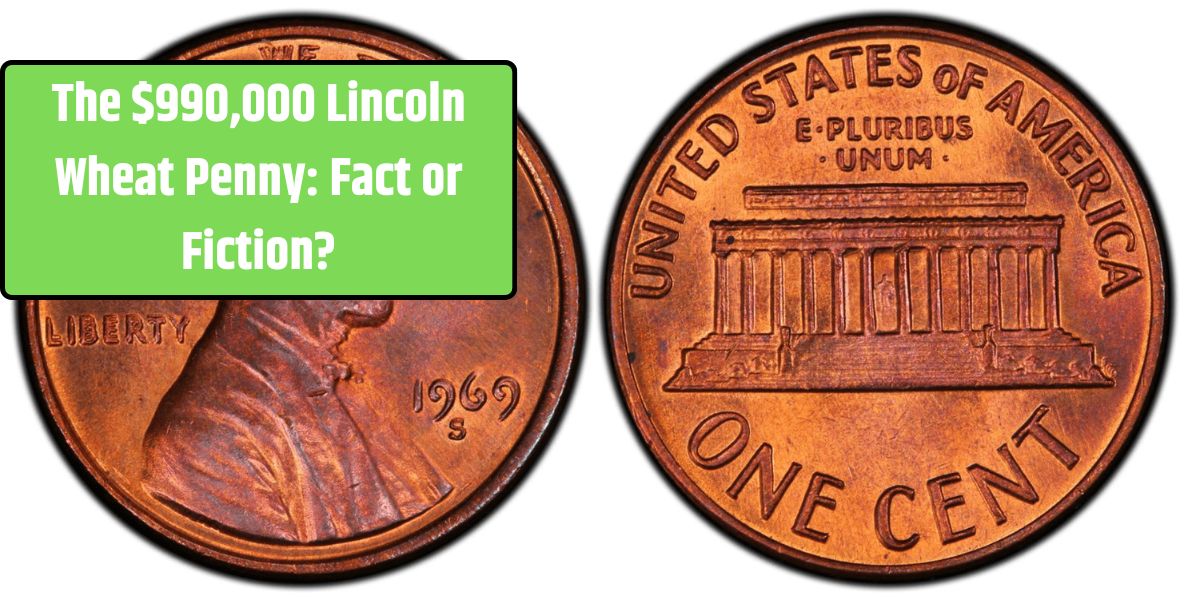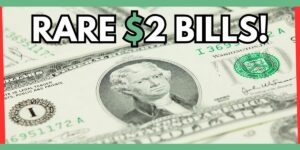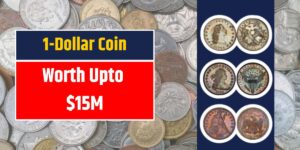The $990,000 Lincoln Wheat Penny has ignited both curiosity and skepticism in the coin collecting community. While Lincoln Wheat pennies are a cornerstone of American numismatics, the extraordinary price tag on this 1920 penny has raised significant doubts. Prized for their historical and artistic value, these pennies rarely command such exorbitant prices unless they possess unique characteristics, such as minting errors or pristine condition. The lack of verifiable details and professional certification for this coin serves as a cautionary tale for collectors.
This article delves into the story of the $990,000 Lincoln Wheat penny, identifies critical red flags, and provides practical tips for navigating the coin market safely.
Overview of the $990,000 Lincoln Wheat Penny
| Aspect | Details |
|---|---|
| Coin in Question | 1920 Lincoln Wheat Penny |
| Historical Significance | Features Abraham Lincoln, minted to commemorate his centennial in 1909 |
| Red Flags Identified | Exorbitant pricing, lack of certification, unverified claims |
| Authenticity Concerns | Absence of professional grading or seller credibility |
| Market Insight | Most 1920 Lincoln Wheat pennies are valued around $40 |
Understanding the $990,000 Lincoln Wheat Penny
The Lincoln Wheat penny, first introduced in 1909, is beloved by collectors for its connection to President Abraham Lincoln and its intricate design by Victor D. Brenner. While rare variations of this coin can fetch high prices, the 1920 Lincoln Wheat penny typically holds a market value of $40, depending on its condition.
The $990,000 listing shocked collectors, not for its rarity but for its unsupported price. The seller’s claims of ties to President Theodore Roosevelt and the Panama Canal lacked documentation, further casting doubt on the coin’s legitimacy. This incident underscores the importance of skepticism and research when evaluating high-value coin listings.
Four Red Flags Every Collector Should Recognize
1. Exorbitant Pricing
A coin priced far beyond its typical market value is a major warning sign. The $990,000 asking price for this Lincoln Wheat penny is disproportionate to its usual worth. Even coins in mint condition or with rare errors typically do not approach such figures without significant historical or numismatic importance.
- Tip: Research the standard market value of a coin to ensure fair pricing.
2. Lack of Professional Certification
High-value coins must be authenticated and graded by trusted services like PCGS (Professional Coin Grading Service), NGC (Numismatic Guaranty Company), or ANACS. These organizations evaluate a coin’s condition, rarity, and authenticity, offering buyers peace of mind.
- Red Flag: The $990,000 penny lacked certification, making its legitimacy questionable.
- Tip: Always insist on certified coins when making significant purchases.
3. Unsubstantiated Claims
Some sellers inflate a coin’s value by associating it with unverified historical events or figures. In this case, claims of connections to Theodore Roosevelt and the Panama Canal lacked credible evidence. Without documentation, these assertions serve more as marketing tactics than genuine indicators of value.
- Tip: Request documentation to support any unusual claims, and verify their authenticity independently.
4. Questionable Selling Platforms
High-value coins are typically sold through reputable auction houses or certified dealers. Listing a $990,000 coin on platforms like eBay, which often lack robust authentication processes, is suspicious.
- Tip: Check the seller’s reviews and history for signs of credibility, and prefer established auction platforms for high-value transactions.
Why Is the Lincoln Wheat Penny So Popular?
The Lincoln Wheat penny has been a favorite among collectors since its debut in 1909. It was the first U.S. coin to feature a president and was released to commemorate Lincoln’s centennial. Designed by Victor D. Brenner, the coin is valued for its:
- Historical Significance: Celebrates Abraham Lincoln’s legacy.
- Artistic Merit: Brenner’s design captures Lincoln’s enduring impact on American culture.
- Accessibility: Common examples are affordable, while rare variants provide challenges for advanced collectors.
Tips for Collecting Coins Safely
Navigating the coin market requires vigilance to avoid scams and counterfeits. Here are some essential tips:
1. Research Thoroughly
Understand the history, features, and typical market value of coins you’re interested in. This knowledge is crucial for recognizing suspicious listings.
2. Verify Authenticity
Only buy coins certified by reputable grading services like PCGS, NGC, or ANACS. Certified coins provide assurance of their value and legitimacy.
3. Examine Listings Carefully
Look for high-quality images and detailed descriptions. Blurry or vague listings can hide flaws or inconsistencies.
4. Check Seller Reputation
Whether buying online or in person, ensure the seller is credible. Reviews and recommendations from other collectors can help guide your choice.
5. Use Trusted Platforms
Buy from established auction houses, certified dealers, or local coin shops. Be cautious with online marketplaces unless the seller is verifiable.
The story of the $990,000 Lincoln Wheat Penny serves as a reminder of the need for diligence in coin collecting. By recognizing the red flags outlined here, collectors can avoid scams and focus on building a collection that is both valuable and authentic.
Have you encountered a suspicious coin listing? Share your experiences in the comments below! For more tips and insights, explore our other articles on rare coins and smart collecting practices.
FAQ:
Q. What is the typical value of a 1920 Lincoln Wheat penny?
Most 1920 Lincoln Wheat pennies are worth about $40, depending on their condition. Rare errors or mint-state coins can command higher prices.
Q. Why is certification important for high-value coins?
Certification verifies a coin’s authenticity, grade, and market value, protecting buyers from counterfeits and overvalued listings.
Q. Are all rare coins listed online scams?
Not all online listings are scams, but collectors should carefully vet sellers, examine listings, and verify certifications before making a purchase.




